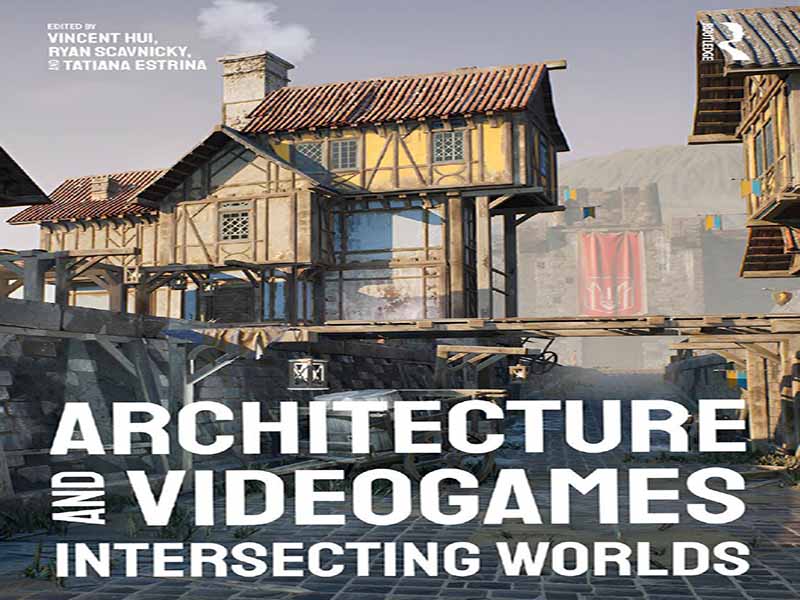- عنوان کتاب: Architecture and Videogames Intersecting Worlds
- نویسنده: Vincent Hui, Ryan Scavnicky, Tatiana Estrina
- حوزه: توسعه بازی
- سال انتشار: 2025
- تعداد صفحه: 612
- زبان اصلی: انگلیسی
- نوع فایل: pdf
- حجم فایل: 11.6 مگابایت
این کتاب به بررسی و تأیید همزیستی نوظهور بین بازیهای ویدیویی و معماری، از جمله بینشهایی از طیف متنوعی از رشتهها، میپردازد. با مشارکت متخصصان در هر دو صنعت معماری و بازیهای ویدیویی، بررسی میکند که چگونه بازیهای ویدیویی به عنوان یک رسانه، عموم مردم را در مورد محیطهای ساخته شده گذشته آگاه کردهاند، آگاهی بیشتری از بافت شهری فعلی ما ارائه دادهاند و الهامبخش مسیرهای آینده معماری بودهاند. بازیهای ویدیویی، به عنوان یک رسانه نسبتاً نوپا، در طول ۵۰ سال گذشته به سرعت از یک نوآوری فرهنگی به پیامبر معماری تبدیل شدهاند. اینکه بازیهای ویدیویی به عنوان یک نماینده تعاملی برای دنیای واقعی عمل میکنند، صرفاً دریچهای به میزان فراگیری و قدرت این رسانه در عمل معماری است. اگر معماری ترکیبی از ارزش فرهنگی است و بازیهای ویدیویی یک رسانه فرهنگی غالب امروز هستند، چگونه بر معماری فردا تأثیر خواهند گذاشت؟ این کتاب به هفت بخش تقسیم شده است: مصنوعات فرهنگی، بازتولید تاریخی، فناوریهای تولید، آموزش طراحی، نمایندهها و بازنمایی، جهانهای پلزننده و آیندههای پیشبینیشده.
This book explores and affirms the emergent symbiosis between videogames and architecture, including insights from a diverse range of disciplines. With contributions from authorities in both architecture and videogame industries, it examines how videogames as a medium have enlightened the public about the built environments of the past, offered heightened awareness of our current urban context, and presented inspiration for the future directions of architecture. A relatively nascent medium, videogames have rapidly transitioned from cultural novelty to architectural prophet over the past 50 years. That videogames serve as an interactive proxy for the real world is merely a gateway into just how pervasive and potent the medium is in architectural praxis. If architecture is a synthesis of cultural value and videogames are a dominant cultural medium of today, how will they influence the architecture of tomorrow? The book is split into seven sections: Cultural Artifacts, Historic Reproduction, Production Technologies, Design Pedagogy, Proxies and Representation, Bridging Worlds, and Projected Futures.
این کتاب را میتوانید از لینک زیر بصورت رایگان دانلود کنید:



































نظرات کاربران